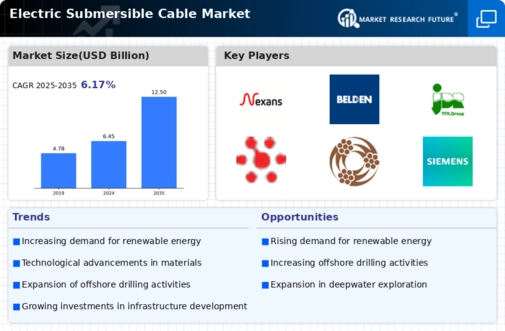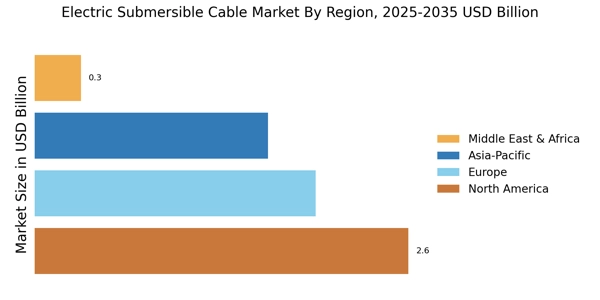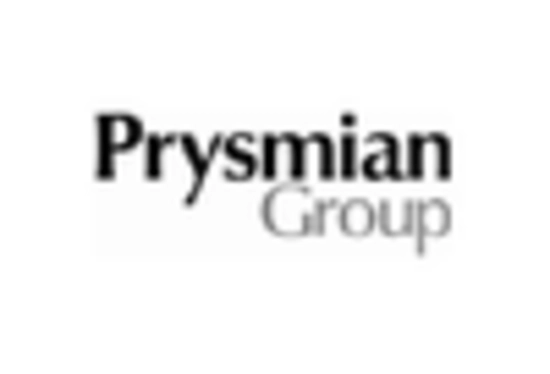Focus on Renewable Energy Integration
The Electric Submersible Cable Market is increasingly aligned with the focus on renewable energy integration. As countries strive to meet sustainability goals, there is a growing need for efficient energy transmission systems that can support renewable sources such as wind and solar. Electric submersible cables play a crucial role in connecting these energy sources to the grid, facilitating the transition to cleaner energy. The market is expected to witness a shift towards cables that can withstand harsh environmental conditions, ensuring reliability and longevity. This trend indicates a potential increase in market share for electric submersible cables as renewable energy projects expand.
Rising Demand for Oil and Gas Production
The Electric Submersible Cable Market is significantly influenced by the rising demand for oil and gas production. As energy consumption continues to increase, operators are seeking efficient methods to extract resources from deeper wells. Electric submersible pumps, powered by specialized cables, are essential for this process. The market for these cables is projected to reach USD 1.5 billion by 2026, driven by the need for reliable and efficient extraction methods. This demand is particularly pronounced in regions with mature oil fields, where enhanced recovery techniques are being employed to maximize output. Consequently, the growth in oil and gas production directly correlates with the expansion of the electric submersible cable market.
Technological Advancements in Cable Design
The Electric Submersible Cable Market is experiencing a surge in technological advancements that enhance cable design and performance. Innovations such as improved insulation materials and advanced manufacturing techniques are leading to cables that are more durable and efficient. For instance, the introduction of high-temperature superconductors is expected to revolutionize the industry by allowing for higher current capacities and reduced energy losses. As a result, the market is projected to grow at a compound annual growth rate of approximately 6% over the next five years. These advancements not only improve operational efficiency but also reduce maintenance costs, making them attractive to operators in various sectors.
Expansion of Offshore Oil and Gas Activities
The Electric Submersible Cable Market is poised for growth due to the expansion of offshore oil and gas activities. As exploration and production move into deeper waters, the demand for robust and reliable submersible cables is escalating. These cables are essential for powering submersible pumps used in offshore drilling operations. The offshore segment is anticipated to account for a significant portion of the market, with investments in new offshore projects projected to exceed USD 200 billion over the next decade. This trend underscores the critical role that electric submersible cables will play in supporting the infrastructure needed for offshore energy production.
Increased Investment in Infrastructure Development
The Electric Submersible Cable Market is benefiting from increased investment in infrastructure development across various sectors. Governments and private entities are allocating substantial resources to enhance energy infrastructure, which includes the installation of electric submersible cables. This investment is particularly evident in emerging markets, where the demand for reliable energy sources is growing. The market is expected to see a boost as new projects are initiated, with an estimated increase in cable installations projected to reach 15% annually. This trend highlights the importance of electric submersible cables in supporting the energy needs of expanding urban areas and industrial sectors.


















Leave a Comment